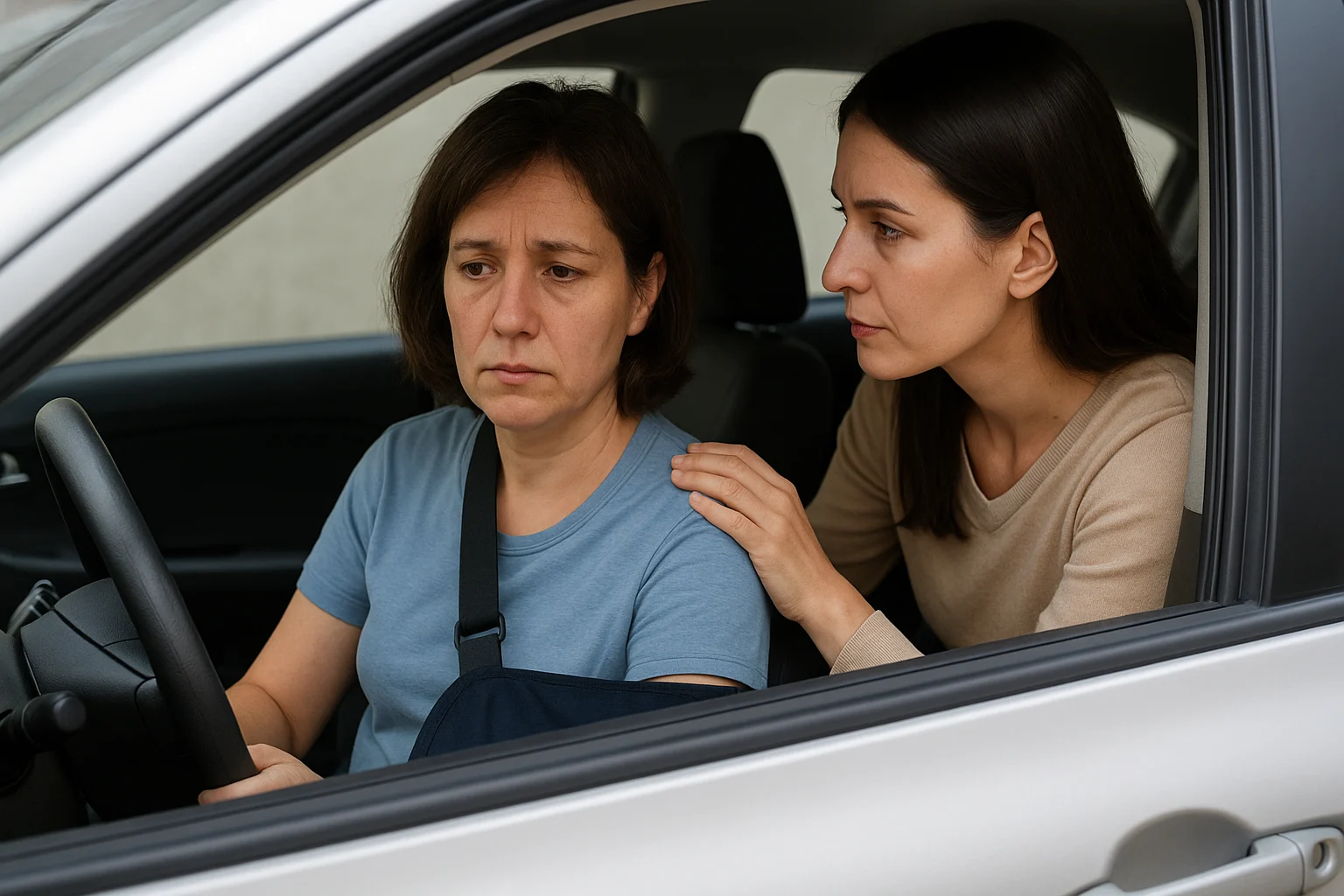

Losing the ability to drive is one of the most common concerns patients face after orthopaedic surgery. Regaining independence is important, but safety must always come first. Driving too soon after an operation can put you, your passengers, and others at risk. It also carries legal and insurance implications.
So when is it safe to return to the road after shoulder, hip, or knee surgery? The answer depends on several factors, including the type of surgery, your recovery progress, and state licensing requirements.
Driving safely requires:
If any of these are impaired, driving may not be safe. Beyond physical ability, there are also medico-legal risks: insurers may not cover you if you drive before you are cleared, and you could be liable if an accident occurs.
For smaller procedures (such as arthroscopy or keyhole repairs), many patients regain enough function to drive within 2–4 weeks. Larger operations, like shoulder replacements or rotator cuff repairs, often require 6–8 weeks before it is safe to drive.
A key milestone is being out of a sling and able to control the steering wheel without pain. You should also be able to perform an emergency manoeuvre, such as quickly turning the wheel or braking, without hesitation.
Before attempting to drive:
Driving after hip replacement depends on which side was operated on:
Transport authorities in Australia generally require that drivers be medically fit to operate a vehicle. While there is no set law on waiting times, you must be able to demonstrate safe control of your car. If your doctor has advised you not to drive and you ignore this, your insurance may be invalid.
Research has shown that brake reaction times often return to safe levels around 4–6 weeks post-hip replacement. However, recovery is highly individual. Some patients may take longer, especially if they experience stiffness or weakness.
Knee replacements typically require a break of 4–6 weeks before driving. This is because it takes time to rebuild muscle strength, coordination, and confidence in using the pedals.
Patients who undergo a right knee replacement usually need longer recovery before driving again compared with those who have surgery on the left side (in automatic vehicles).
Try pressing the brake pedal firmly in a stationary car. If you cannot generate enough force quickly, you are not ready to drive.
Returning to driving is not only a medical decision but also a legal one.
State Licensing Requirements
Insurance Implications
Medication Use
No two recoveries are the same. Your age, general health, type of surgery, and confidence all play a role. While guidelines are useful, your surgeon’s advice should take priority.
Some practical tips:
Driving again after shoulder, hip, or knee surgery is a significant milestone in recovery. But rushing the process can put your health and safety at risk. The decision should be based on:
Always prioritise safety and take things step by step. Regaining independence is important, but your long-term recovery matters more.
1. Can I drive if I’m still using a sling or crutches?
No. If you require a sling or crutches, you are unlikely to have the mobility or reflexes needed for safe driving. Wait until you are fully weight-bearing (for leg surgeries) or out of your sling (for shoulder surgeries).
2. Do I need a medical certificate to drive again?
In most cases, there is no formal requirement. However, if your licence status is questioned after an accident, having written clearance from your surgeon may protect you legally and with your insurer.
3. What if I only drive short distances?
Even short trips require quick reactions. If you cannot brake hard or turn the wheel suddenly without pain, you are not ready to drive, regardless of distance.
4. Can I drive while taking painkillers?
Driving under the influence of opioid medications or sedatives is unsafe and can carry legal consequences. Always wait until you are off strong pain relief before resuming driving.
5. Is recovery faster if I drive an automatic car?
Yes, in some cases. Patients with left-sided hip or knee surgery may return to driving earlier in automatic vehicles since the operated leg is not needed for pedals.